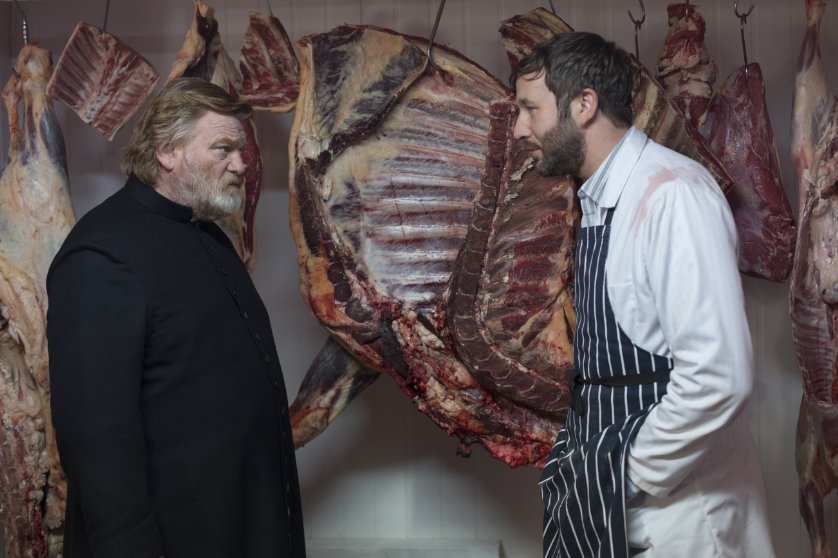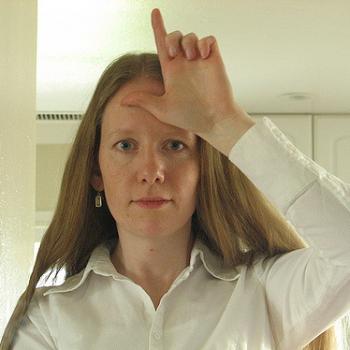
(Trigger warning: this review contains some non-explicit references to sexual abuse. The film itself speaks more graphically of the abuse.)
At first glance, Calvary is a deceptively simple film built around a very simple plot device: Father James (Brendan Gleeson), a Catholic priest in Ireland, is taking confessions one day when a man tells him that he was horrifically sexually abused many times a week for years as a young child…and that this abuse was committed by a Catholic priest. The man tells Father James that going and killing pedophile priests would accomplish nothing; everyone would understand that action. But his rage drives him to instead kill an innocent Catholic priest: that action would drive terror into people’s hearts. And then the man tells Father James that he plans to kill him in a week’s time. He tells Father James to meet him on the beach at a set time. The rest of the film unfolds over the course of the week between the confession and the proposed meeting.
Father James reports the threat to his superior; since it is a planned future sin and not the confession of a past sin, Father James is not bound by the sacramental seal and is free to report the threat to the police. A quiet tension circulates through the film as Father James tries to decide what to do. Like Jesus at Gethsemane, he is torn between both his personal wish to survive and the need of a man in pain. Father James is a flawed person: he swears, drinks too much sometimes, neglects his adult daughter (conceived with his late wife before he became a priest), sometimes is impatient with people, sometimes gives terribly bad advice. But he marches onward, informed largely by the cross at the center of his faith.
The key point revealed early in the film is that Father James actually knows who the threatener is. We the viewers don’t know who the person is until the final few moments of the film, however. This infuses each pastoral interaction with a cruciform energy. To us, every person Father James encounters is his potential murderer. Will he love them anyway, as he is called to love them? Will he flee? Kill his threatener? Unmask him? What would you do?
Somewhere in the film, he speaks this sentence: “No one is a lost cause.” To Father James, even a man who threatens him with murder is someone loved by God. In particular, this person is loved by God when one considers how he has been so deeply wounded by the Church.
And that brings me to the specter that haunts the whole of the film: the specter of clergy sexual abuse. It is as if an atomic bomb has gone off in the Church–both local and universal–and this film is showing us the fallout. Throughout the film, as Father James attempts to minister to his congregation, he encounters sin after sin. My husband described his character as “bearing the sin” of so many people in the film. I agree that that is the filmmaker’s intent and I also think many of the manifestations of sin that we see in the film are a direct result of the shattered relationship that most of the people in the film have with the Church and with clergy.
Clergy sexual abuse is among the most horrific sins that can be committed. For religious people, a pastor or priest represents God to them. They don’t worship the religious leader, but he embodies God’s presence among them. And so when such a leader abuses the flock, it is as if people perceive God Himself as abusing them. Many people who have been harmed by religious abuse of one kind or another (sexual, emotional, physical, verbal) are nearly permanently damaged in their ability to relate to God and to other people in trust.











